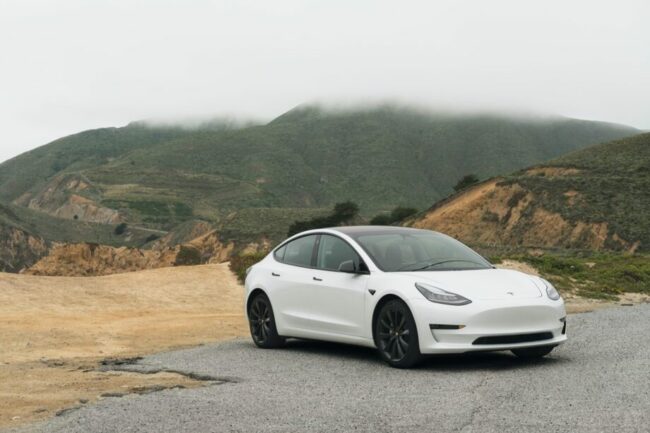Charging a Tesla isn’t merely about plugging and waiting. The process is a sophisticated blend of advanced technology and practical considerations. Multiple elements determine the charging time, such as the charger type, power output, and your Tesla’s specific model.
The charger you pick plays a pivotal role: whether it’s a home setup, a public charging point, or a destination charging facility at hotels and restaurants. Each has its advantages, limitations, and consequent charging times.

Also, Tesla’s commitment to user-friendliness and innovation has streamlined the charging experience. However, understanding the nuances can help you optimize the charging process and make the most of your vehicle’s incredible features.
How Long Does It Take A Tesla To Charge?
A Tesla’s charging time doesn’t remain constant. It’s influenced by the charger’s power capacity, the Tesla model, and the battery’s current state. For instance, the first half of the battery might charge faster, but as it approaches full capacity, the rate might decrease, a phenomenon known as “tapering”.
This tapering effect is a protective measure for lithium-ion batteries. It helps in preserving the battery’s health and longevity. Charging a Tesla via a regular household socket is feasible, but it’s not the quickest way. It’s more of a fallback option or a slow overnight charge method.
Countries with a higher Tesla density might experience an overburdened public charging infrastructure. So, having a home charger is a convenient, reliable fallback.
The beauty of Tesla’s charging infrastructure is its versatility. With the Supercharger network, the charging time drastically reduces due to Direct Current (DC) instead of the standard Alternating Current (AC). These Superchargers, owned exclusively by Tesla, ensure a consistent, rapid charge.
Different Tesla Chargers Explained
Tesla charging through NEMA 5-15
This is the basic level of charging, equivalent to plugging your Tesla into a standard household outlet. It’s slow, but it’s reliable. Best for overnight charging or topping up.
Tesla charging through NEMA 14-50
Faster than the previous option, this requires a specialized outlet, similar to the ones for heavy appliances. It offers a quicker home charging solution.
Tesla charging station wall connections
A dedicated home charging station ensures consistent power delivery, reducing the overall charging time. This is a premium option for Tesla owners wanting a dedicated home solution.
Tesla Superchargers
The crème de la crème of charging solutions, Superchargers are strategically placed to facilitate long-distance travel. They can replenish a Tesla battery in under an hour, ensuring you’re quickly back on the road.
Why Does Charging A Tesla Take So Long?
While Tesla’s charging times are groundbreaking in the EV industry, they can’t match the speed of filling up a gas tank—yet. The duration largely depends on the charger’s capability. Superchargers offer unmatched speed, but home chargers or third-party solutions might be slower due to the AC power delivery.
However, the brilliance of Tesla’s design is evident when the vehicle is parked overnight or during work hours. This downtime can be utilized for charging, ensuring the car is always ready to go.
It’s not just about the charger, though. The battery’s capacity, its current state, and even external factors like temperature can influence charging times.
Battery Longevity and Considerations
While charging times are crucial, understanding the battery’s longevity is equally essential. Tesla’s batteries are engineered for endurance. On average, they can last anywhere from 300,000 to 500,000 miles, which is a testament to Tesla’s focus on quality and sustainability.
However, factors like driving style, terrain, and climate can affect the exact mileage you get out of a full charge. Hence, being proactive and charging the car before it gets too low is recommended.
The Cost of Charging
Owning an electric vehicle promises long-term savings, especially when you consider fuel expenses. However, charging costs can vary. Factors include local electricity rates, the Tesla model, and the chosen charging method.
Overall, charging a Tesla is more cost-effective than refueling a traditional vehicle, especially in the long run.
Conclusion
The electric vehicle sector is a dynamic landscape of innovation and progress. With players like Tesla leading the charge, the future looks promising. As EVs become more affordable and charging infrastructure more widespread, the world will inevitably witness a shift towards sustainable transportation.
Tesla’s focus on both vehicle and charging technology ensures they remain at the forefront of this evolution.

Editorial Staff
Our writers, editors, content managers, and SEO specialist. We all take part in crafting amazing articles. We spend hours ensuring that each article is based on facts, researched, and thorough. You'll never want to click the back button to look for more answers other than here!
